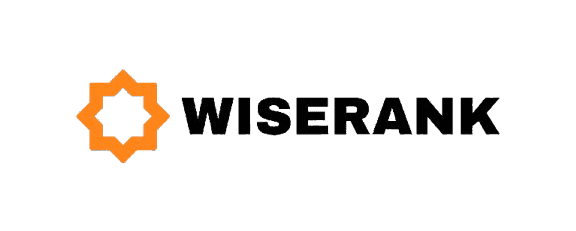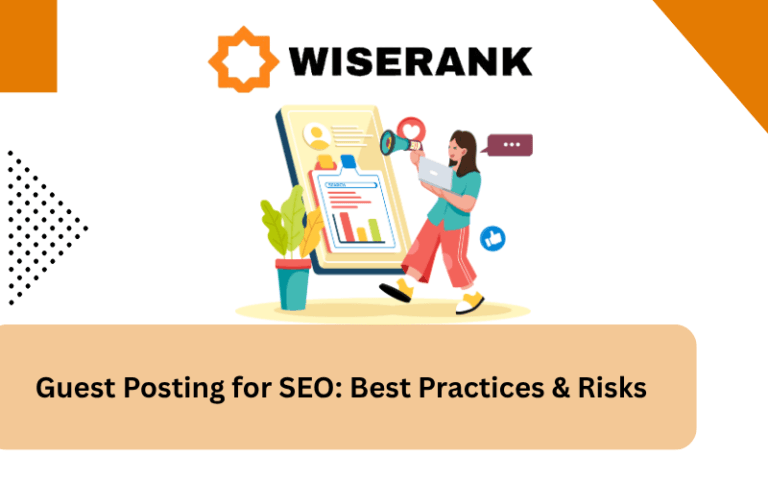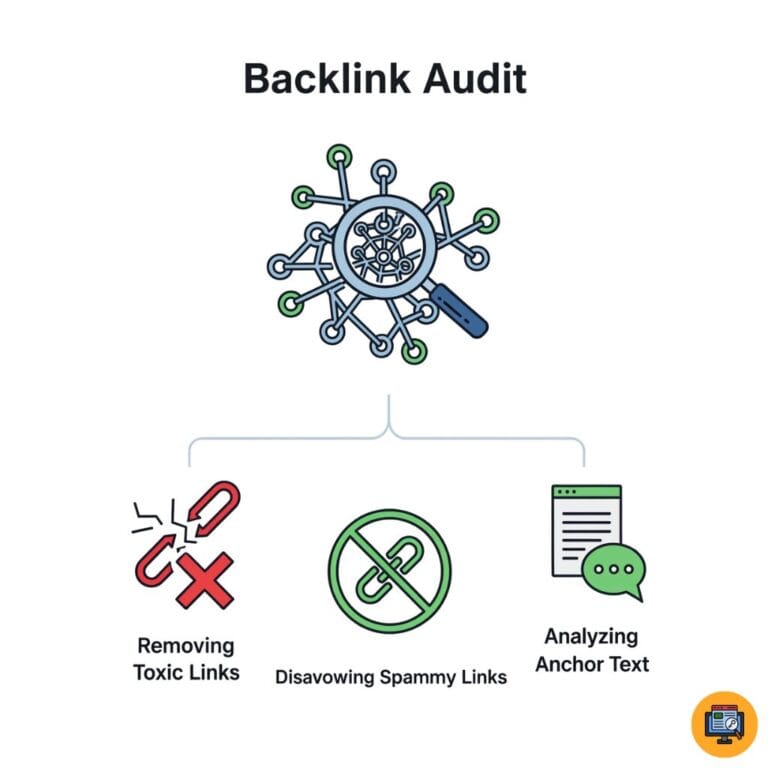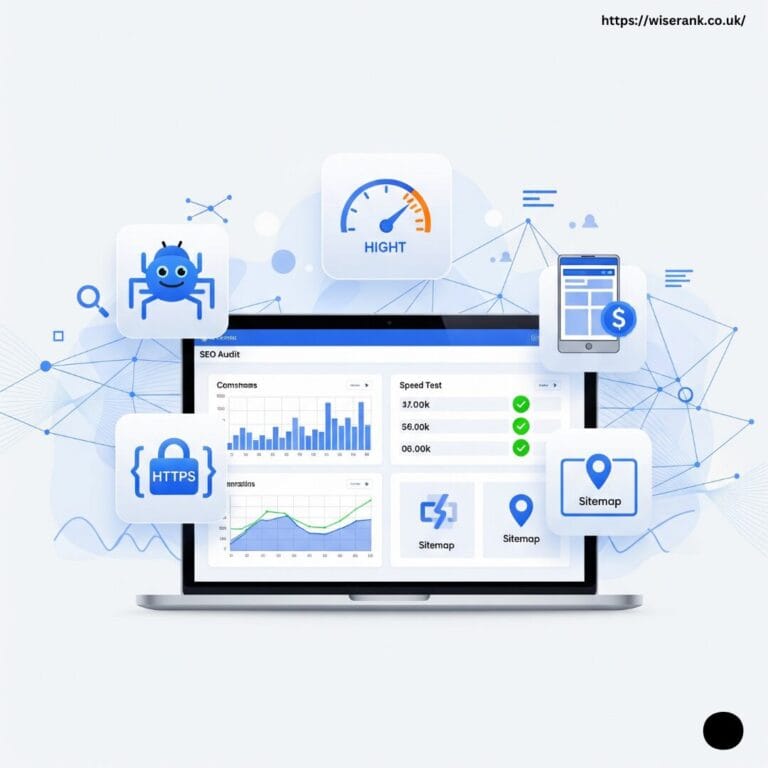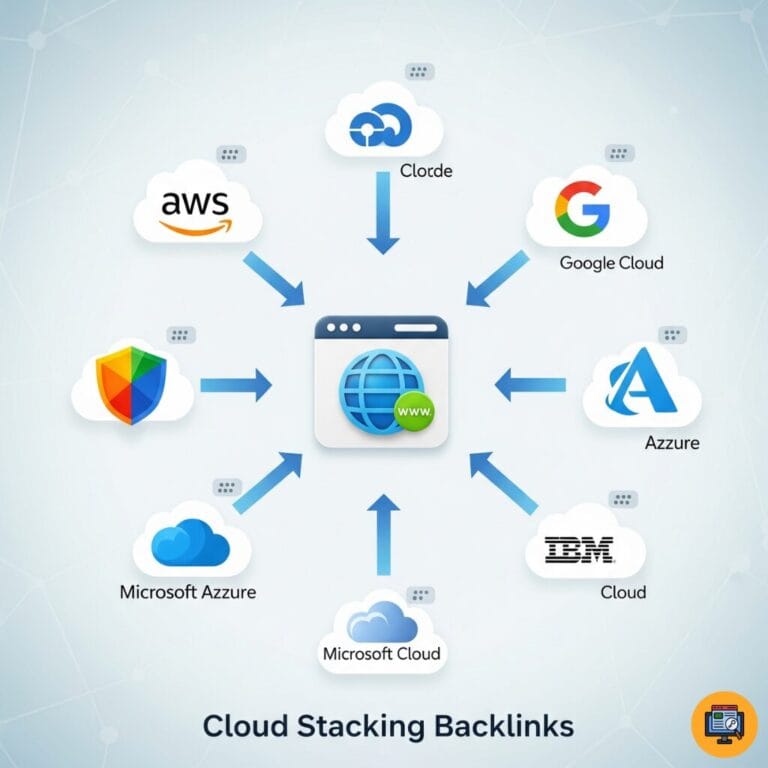How Social Media Connects to Off-Page SEO?
Social media platforms do not directly pass link equity since most social links use nofollow attributes. However, social media significantly impacts off-page SEO through indirect channels that influence search rankings.
Active social presence drives content discovery, generates brand mentions, increases referral traffic, and amplifies content reach in ways that ultimately support your SEO efforts.
Understanding Social Signals and SEO
Social signals refer to engagement metrics like shares, likes, comments, and overall social media activity around your content and brand. While Google has stated social signals are not direct ranking factors, they influence SEO through multiple indirect pathways.
The relationship between social media and search rankings works through content amplification, brand awareness, and user behavior signals rather than traditional link equity.
What Counts as Social Signals?
Social shares spreading your content across platforms, likes and reactions showing content appreciation, comments indicating engagement depth, follower growth demonstrating brand interest, and profile mentions referencing your brand all contribute to social signals.
The Indirect SEO Impact
Content shared widely reaches more potential linkers, increased visibility leads to natural backlink opportunities, social traffic improves engagement metrics, and brand awareness generates branded searches that Google recognizes.
Correlation vs Causation
Studies show correlation between social shares and rankings, but high-quality content naturally performs well everywhere, social success and SEO success share common factors, and focusing solely on social without content quality fails.
Content Amplification Through Social Platforms
Social media’s primary SEO value lies in content amplification. Sharing your content across social platforms exposes it to audiences who might never find it through search alone.

This amplification creates opportunities for natural link acquisition as more people discover and reference your content.
How Amplification Drives Backlinks
Bloggers and journalists discover content via social feeds, influencers share interesting content with followers, researchers find data and studies through social platforms, and viral content attracts media attention generating links.
Platform-Specific Amplification
LinkedIn works well for B2B content and professional audiences, Twitter/X spreads news and trending topics quickly, Facebook reaches broad consumer audiences, Pinterest drives traffic for visual and how-to content, and Instagram builds brand awareness through visual storytelling.
Maximizing Content Reach
Share content multiple times with varied messaging, use platform-specific formats and best practices, engage with comments to boost algorithmic visibility, tag relevant accounts and use strategic hashtags, and repurpose content for different platform formats.
Building Brand Awareness for SEO Benefits
Social media builds brand recognition that translates into SEO advantages through increased branded searches, direct traffic, and brand authority signals.
Consistent social presence establishes your brand in audience minds, leading to more people searching for your brand name directly.
Branded Search Volume
Active social presence increases brand awareness, more people search for your brand specifically, branded search growth signals authority to Google, and higher branded search volume improves overall SEO performance.
Brand Authority Development
Regular valuable content positions you as industry expert, social engagement demonstrates active engaged community, influencer connections enhance credibility perception, and consistent presence builds trust over time.
Social Proof and Trust Signals
Large engaged following indicates brand legitimacy, positive interactions show customer satisfaction, user-generated content demonstrates real customer base, and social validation influences search behavior.
Driving Referral Traffic from Social Media
Social platforms drive qualified referral traffic that can improve your site’s engagement metrics and user behavior signals.
High-quality traffic that engages with your content sends positive signals to search engines.
Quality Traffic Indicators
Visitors from social spend time on your site, low bounce rates indicate content relevance, multiple page visits show engagement, conversions demonstrate value, and return visitors indicate satisfied audience.
Optimizing Social Traffic
Link to relevant specific pages not just homepage, use compelling descriptions and visuals, create content specifically for social audiences, track which platforms drive best traffic, and optimize landing pages for social visitors.
Converting Social Visitors
Provide clear calls to action, offer content upgrades or resources, make sharing easy with social buttons, capture emails for future engagement, and create paths to conversion.
Optimizing Social Profiles for SEO
Your social media profiles often rank in search results for branded queries, making optimization important for controlling your brand’s search presence.
Well-optimized profiles provide additional brand touchpoints in search results.
Profile Optimization Best Practices
Use consistent brand name across all platforms, include target keywords in profile descriptions, add website links in profile bios, complete all profile sections thoroughly, and use brand visuals consistently.
Profile Content Strategy
Share diverse content types regularly, engage authentically with your audience, highlight expertise and thought leadership, showcase customer testimonials and success, and maintain active consistent presence.
Profile SEO Elements
Optimize profile URLs when platforms allow, use keyword-rich descriptions naturally, include location information for local SEO, add relevant categories and tags, and link to other social profiles.
Creating Shareable Content That Attracts Links
Content designed for social sharing naturally gets more visibility and creates more opportunities for earning backlinks.

High-Shareability Content Types
Original research and data studies generate shares and citations:
- Industry surveys with unique insights
- Infographics visualizing complex information
- How-to guides solving common problems
- Lists and roundups of useful resources
- Controversial or thought-provoking opinions
- Entertaining or emotional content
- Timely commentary on trending topics
Visual Content Performance
Images increase engagement across platforms, videos generate higher share rates, infographics combine data with visual appeal, charts and graphs make data digestible, and memes and GIFs drive casual sharing.
Optimizing for Shares
Write compelling headlines that promise value, include share-worthy quotes and statistics, add social sharing buttons to content, create platform-specific snippets, and make visual elements shareable.
Social Media Content Types That Generate Backlinks
Create content formats that naturally attract links and shares:
- Original research and industry surveys with data
- Comprehensive how-to guides and tutorials
- Infographics visualizing complex information
- Expert roundups featuring industry leaders
- Case studies with real results and insights
- Interactive tools and calculators
- Thought leadership content on trending topics
Influencer Collaboration for Off-Page SEO
Partnering with social media influencers amplifies your content reach and creates opportunities for high-quality backlinks and brand mentions.
Finding Relevant Influencers
Identify influencers in your industry niche, look for engaged audiences not just large followings, verify authenticity and genuine influence, and ensure values align with your brand.
Collaboration Strategies
Invite influencers to contribute expert content, interview industry leaders for your content, collaborate on research or studies, sponsor content that includes brand mentions, and build genuine long-term relationships.
SEO Benefits from Influencer Work
Influencer shares expose content to large audiences, collaborations often generate backlinks naturally, brand mentions from trusted voices build authority, and influencer content creates linkable assets.
Leveraging Social Listening for SEO
Social listening tools help you understand audience needs, identify content opportunities, and discover brand mention opportunities.
Monitoring Brand Conversations
Track brand mentions across platforms using tools like Brand24 or Mention, identify unlinked brand mentions to convert, understand sentiment around your brand, and discover customer pain points.
Finding Content Ideas
Monitor questions people ask in your niche, identify trending topics gaining traction, discover gaps in existing content, and understand language customers use.
Competitive Intelligence
Track competitor social performance, identify what content resonates in your industry, discover link opportunities competitors found, and learn from successful campaigns.
Platform-Specific SEO Strategies
Different social platforms offer unique SEO benefits requiring tailored approaches.
YouTube for Video SEO
YouTube functions as second largest search engine, videos rank in Google search results, optimize titles and descriptions with keywords, use tags strategically, and include links in video descriptions.
LinkedIn for B2B Authority
Publish long-form LinkedIn articles, optimize profile as landing page, participate in industry groups, and share thought leadership content.
Pinterest for Visual Discovery
Pinterest drives significant referral traffic, optimize pin descriptions with keywords, create boards around topics, and link pins to relevant content.
Twitter/X for Real-Time Engagement
Share timely content and news, engage in trending conversations, use hashtags strategically, and build relationships with journalists.
Measuring Social Media’s SEO Impact
Track specific metrics to understand how social efforts contribute to SEO performance.
Key Metrics to Monitor
Measure referral traffic from each platform using Google Analytics, track social shares and engagement rates, monitor branded search volume growth, count backlinks generated from social discovery, and analyze conversion rates from social traffic.
Attribution and Analysis
Compare social activity to ranking changes, track timing between viral content and link acquisition, monitor domain authority improvements, and correlate social traffic with engagement metrics.
Tools for Measurement
Use Google Analytics for traffic analysis, track social metrics in native platform analytics, monitor backlinks with Ahrefs or SEMrush, and use social listening tools like BuzzSumo.
Common Social Media SEO Mistakes
Avoid these frequent errors that waste effort without delivering SEO benefits.
Critical Mistakes to Avoid
- Focusing only on follower count over engagement
- Posting without strategy or consistency
- Ignoring audience preferences and feedback
- Over-promoting without providing value
- Neglecting profile optimization
- Buying fake followers or engagement
- Treating all platforms identically.
Quality Over Quantity
Better to excel on 2-3 platforms than spread thin, focus on where your audience actively engages, create platform-specific quality content, and maintain consistent valuable presence.
Your Social Media SEO Action Plan
Integrate social media into your off-page SEO strategy by selecting platforms where your audience actively engages, optimizing all profiles completely with keywords and links, and creating shareable content through original research, visual assets, and data people want to cite.
Build engagement by responding to comments, participating in relevant conversations authentically, collaborating with influencers, and fostering genuine community connections that amplify your content reach.
Track performance by monitoring referral traffic, measuring engagement metrics, identifying which content drives backlinks, and refining your strategy based on data. Remember that social media supports SEO through content amplification and brand building rather than direct ranking factors.
